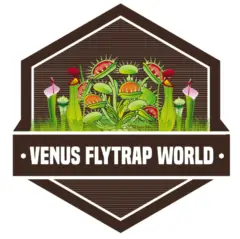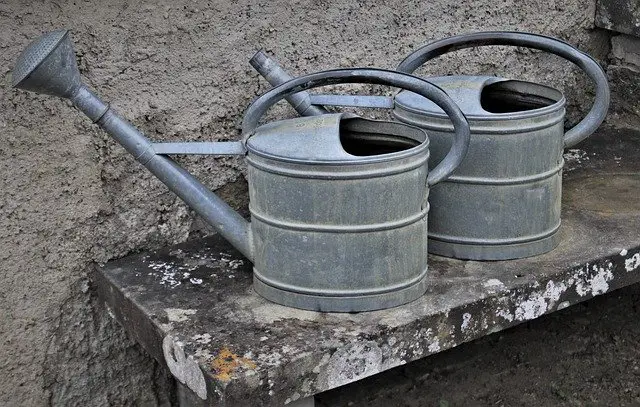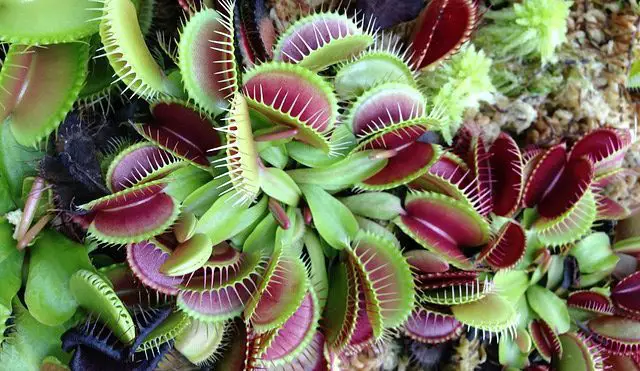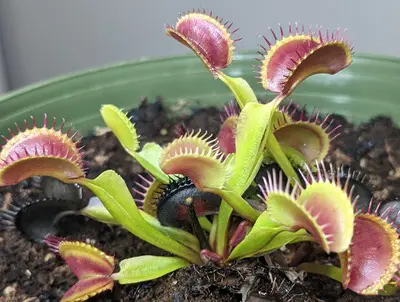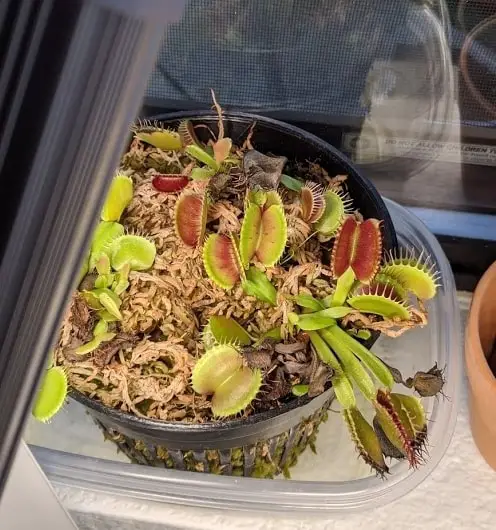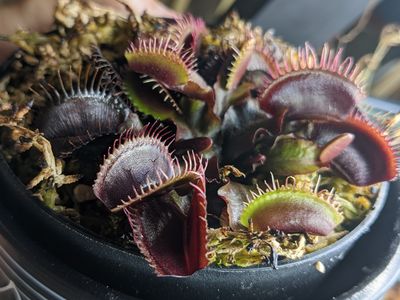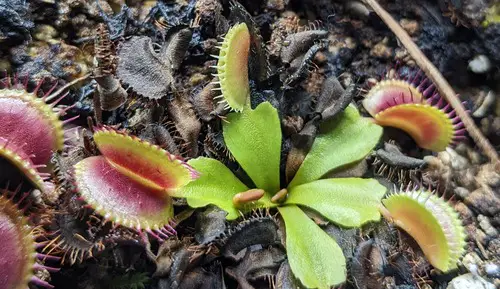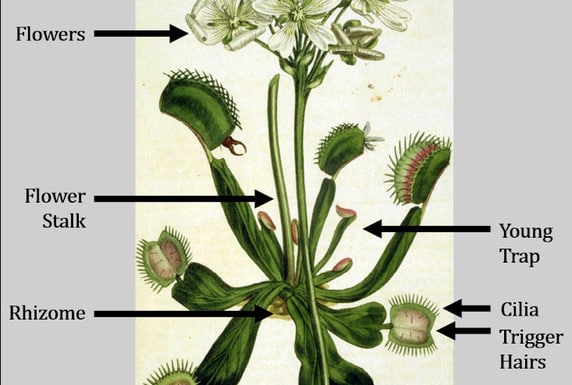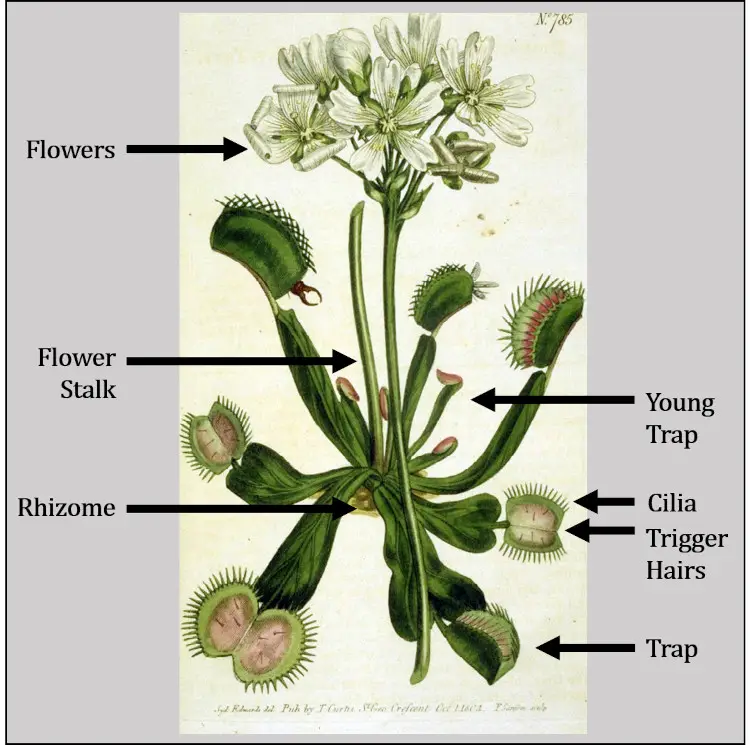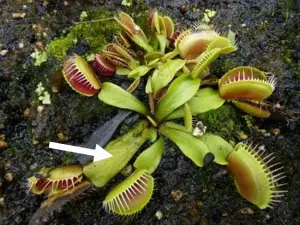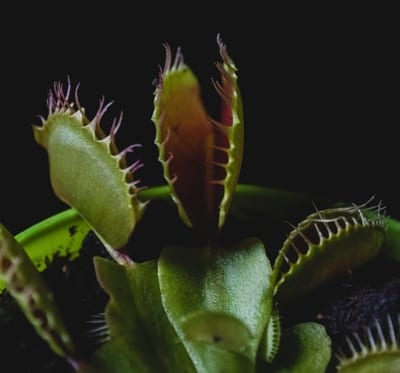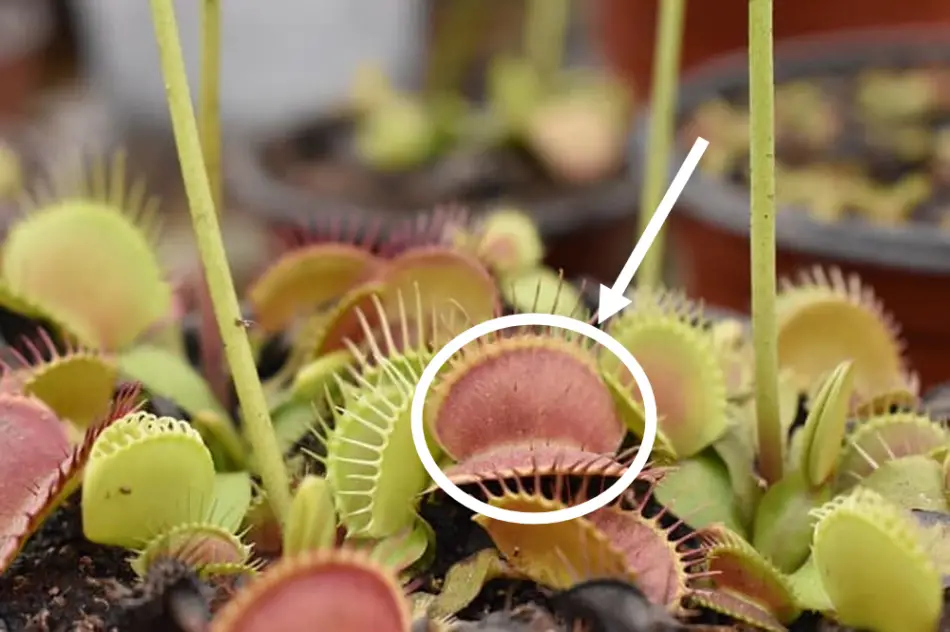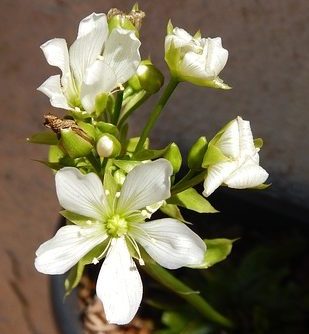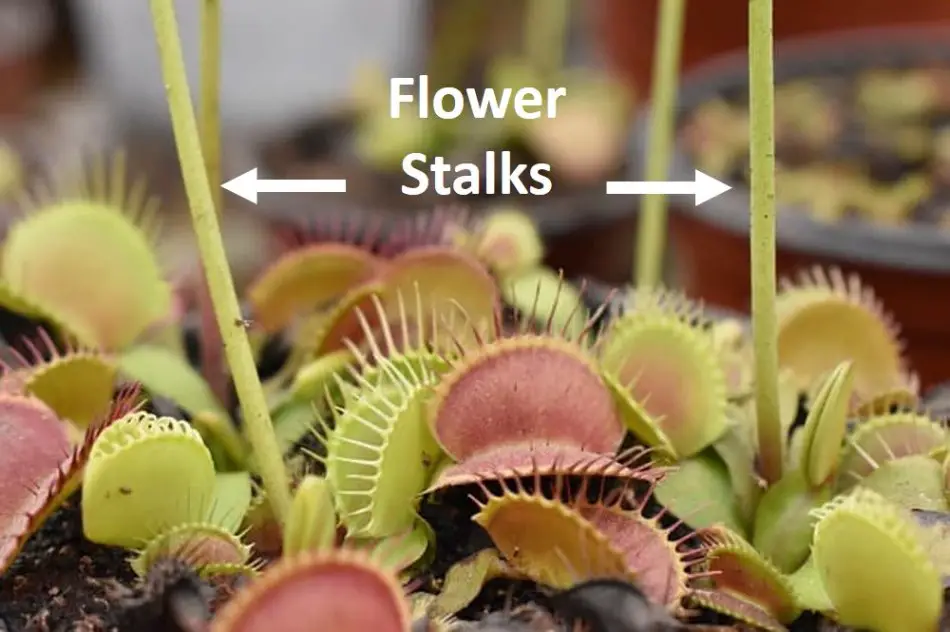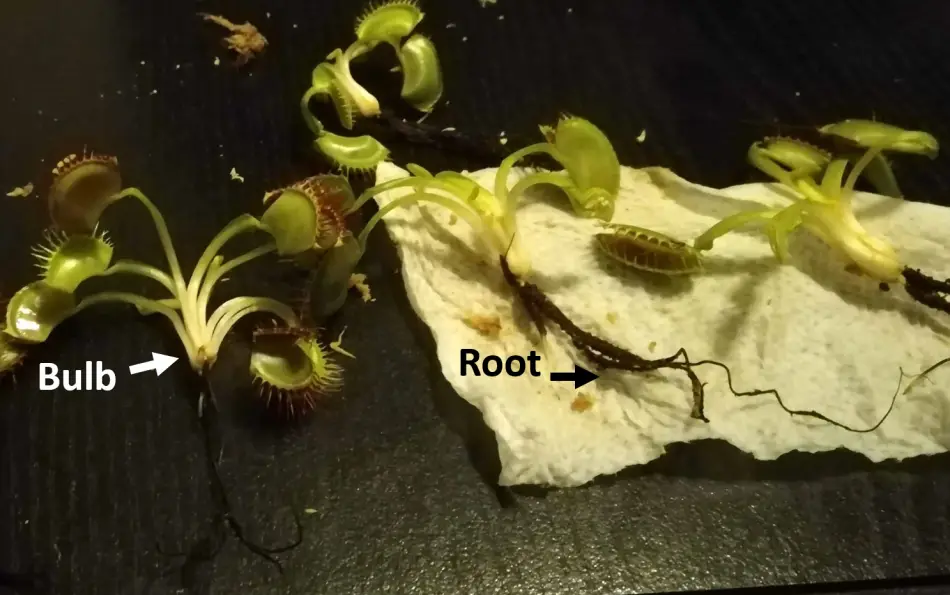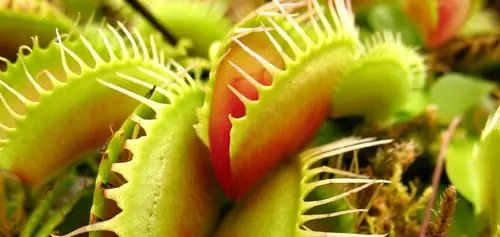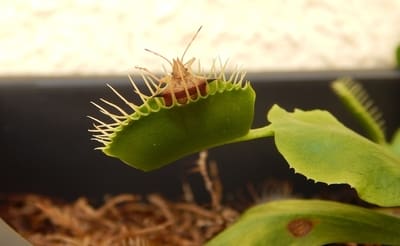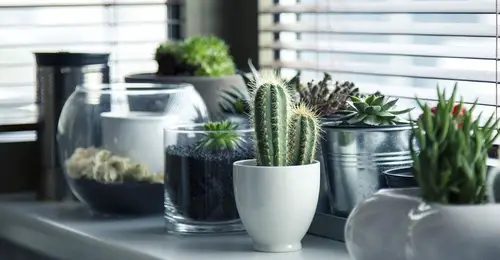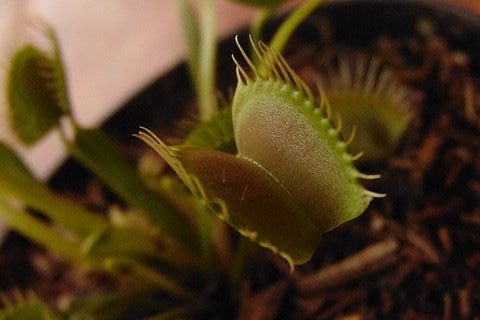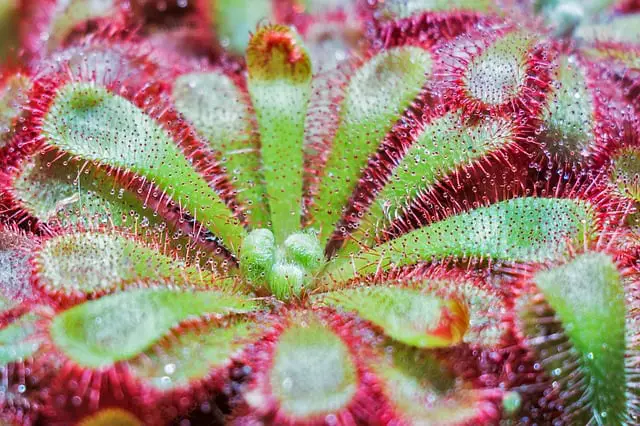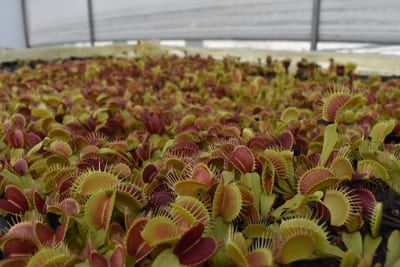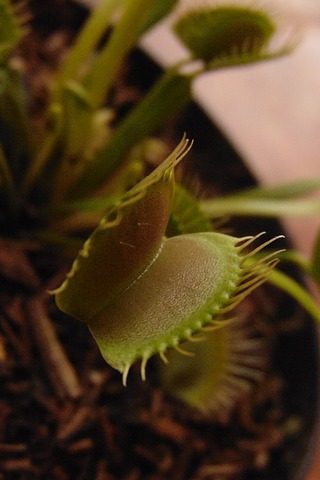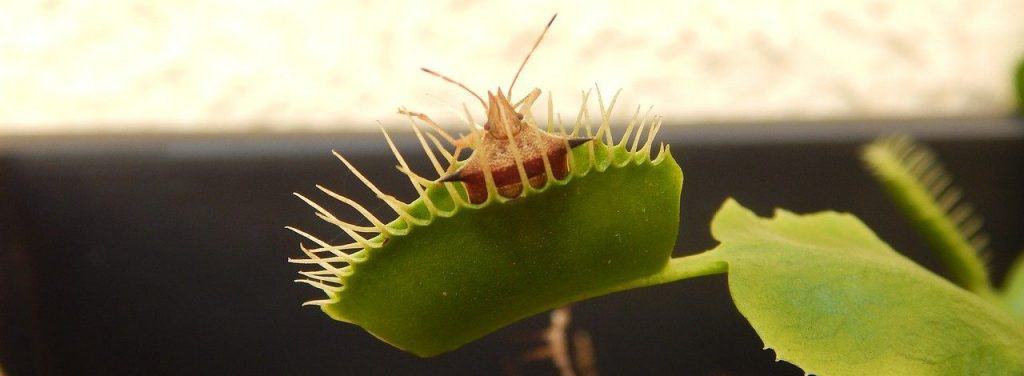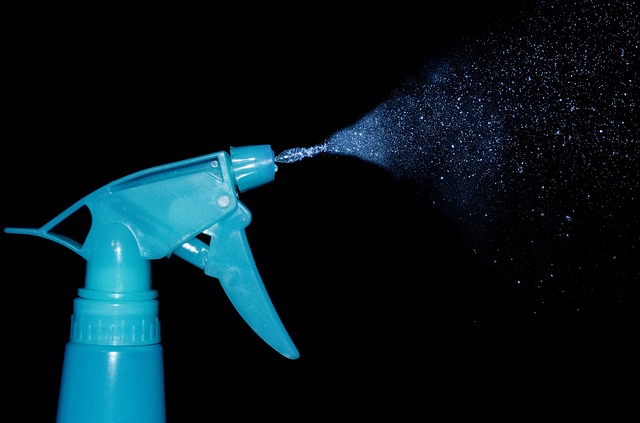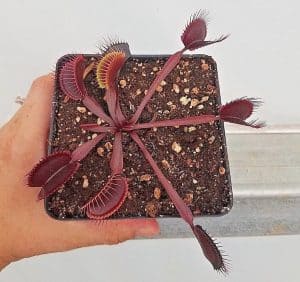When I first got a Venus flytrap I struggled to figure out the optimal watering procedure and frequency. After some research, I learned a lot about Venus flytrap care and their unique requirements. In this article, I would like to share what I learned about watering Venus flytraps.
Venus flytraps can only be watered with distilled water (here is a guide on how to make distilled water), reverse osmosis water, or rainwater. The ground should always remain moist, but not wet. During dormancy, the watering requirement for Venus flytraps lowers significantly.
Employing the incorrect water source, under-watering or over-watering can kill Venus flytrap very easily. Follow the tips on this article to care for your plant properly.
Venus Flytrap Watering Procedure
Water Source
First, before you start watering your plant. You must purchase the correct water source. Venus flytraps can’t be watered with liquids that contain minerals, salts, or any type of nutrients. You can employ:
- Distilled water
- Reverse osmosis water
- Rainwater
Bottled water will kill your plant quickly as it contains other minerals for flavor and Venus flytraps can’t handle minerals. In most cases, tap water is unsuitable for Venus flytraps. However, it really depends on the number of elements contained in the water. The tap water quality and composition vary across cities and sometimes neighborhoods. In the US, tap water commonly contains elements such as copper, calcium, magnesium, and sodium.
You can employ tap water as long as it contains less than 50 parts per million (ppm) of dissolved solids. The only way you can test the ppm quantity is by employing a Total Dissolved Solids (TDS) meter. You can buy a TDS meter for under $20 (here are some examples) and verify the ppm readings. The lower the number the better it will be for your plant. It is recommended to measure the ppm every time you collect water.
Where to buy water for Venus flytraps?
You can buy distilled water or reverse osmosis water in grocery stores, gas stations, or water and ice stores. Generally, it costs about $1 a gallon in grocery stores and about 25-50 cents per gallon in water stores (where you bring your own jug).
If you buy distilled water in the grocery store, make sure to read the label. Some brands add minerals to distilled water to improve the flavor. You should always purchase pure distilled water or reverse osmosis water, with nothing added. Also, you can collect rainwater for free.
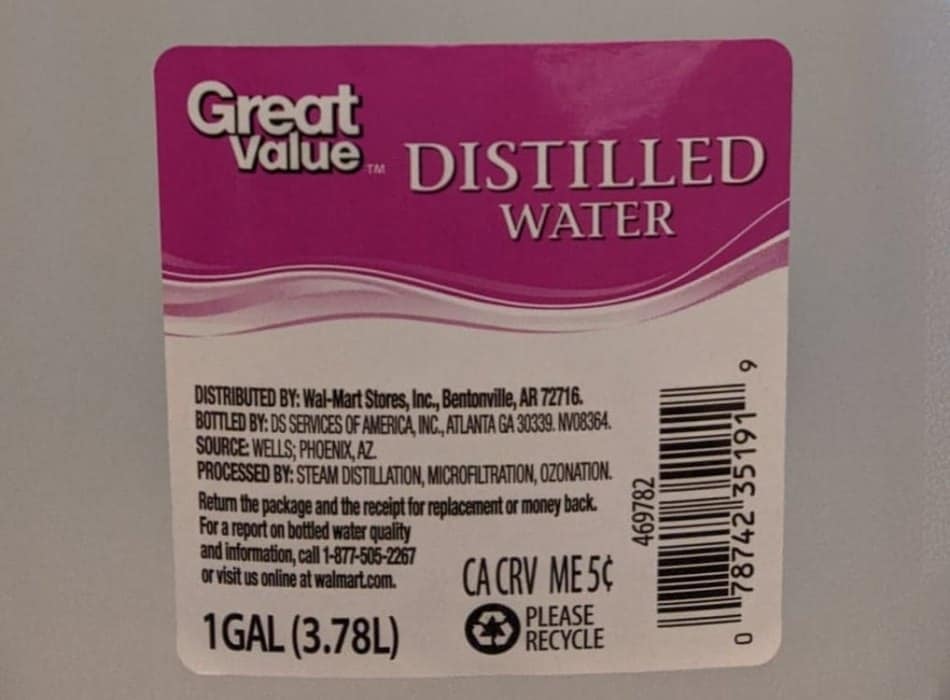
Frequency
It is difficult to give an exact watering frequency for Venus flytrap since their needs vary across multiple factors such as seasons, weather, and plant size. The general rule is to keep the plant’s soil moist or humid at all times. However, you must always avoid flooding or completely saturating the soil.
The best rule of thumb is to water the soil until it has absorbed water throughout. Then, use your finger to press the ground on the surface. Your finger should feel moist soil, but it should not get wet.
If you follow this technique and realize you have over-watered your plant. Don’t worry! Unless is a flooding situation, your plant can handle a little extra water as long as you perfect your technique. Next time, slowly water your plant and feel the ground before you continue to poor.
After watering, you can let your plant be for a few days pr several weeks depending on the season. Once the soil is almost dry, but it hasn’t dried out completely, you can water your plant again.
Watering During Venus Flytrap Dormancy
Every year, in the winter, Venus flytraps should experience a period of dormancy. Dormancy for plants is very similar to hibernation in animals. The plant remains in a resting stage for several weeks (usually 8 to 12 weeks).
During this period, your plant requires less water and less exposure to light. If your plant is dormant, space out your watering routine. Keep in mind that the colder weather will keep the soil humid for longer periods.
How do I know if my plant is dormant? Venus flytraps experience dormancy if they are exposed to temperatures below 45 F for several weeks. When they go dormant Venus flytraps undergo some noticeable changes. The plant loses several leaves and in some cases, it reduces in size. Generally, the plant looks down for as long as the dormancy lasts.
During dormancy, you should never fertilize your plant, feed it, or over-water it.
Watering During Summer
It is a challenge to water Venus flytraps during hot weather. Keeping the soil moist during hot summer days means watering every few days without fault. Venus flytraps are resilient plants, they can handle high temperatures of up to the recommended 95F (32C), but they can only do so if they remain in a humid environment. Otherwise, Venus flytraps can dry out and die.
During summer, you must be especially careful about your plant’s exposure to extremely hot weather. Consider placing your plant indoor if necessary or implementing some shading mechanism such as a shade cloth. Also, you can employ the water tray method to secure enough humidity and water for your plant.
In the water tray method, you place a Venus flytrap pot with drainage halls on top of a plate or shallow container. Then, you add some water to the plate to keep the soil of your plant moist at all times. It is not recommended to leave Venus flytraps living in standing water. However, as long as you do not overfill the container, you won’t harm your plant. Keep the water level below an inch of depth.
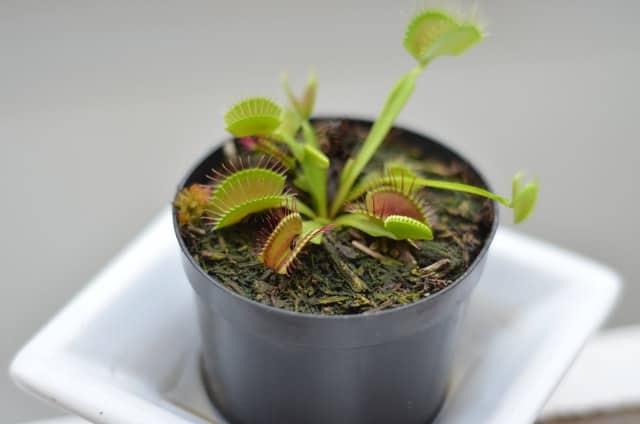
During the winter, or when a Venus flytrap is placed indoors, it is very rare that it will need the additional water in the tray. This method is mostly recommended for the hot summer season or during vacation periods.
You can employ this method when you have to be away for several days or weeks. Your plant might not need all the water, but the chances of harming your plant for slightly over-watering once are very slim.
How to Save Your Venus Flytrap -Improper Watering
Wrong Water Source
Using the wrong water source can kill Venus flytraps very quickly. The minerals in tap water or bottled water contaminate the soil and burn your plant. The plant’s leaves start turning yellow before they blacken. Still, in many cases, you can salvage the plant.
If you used any other type of water other than distilled, reverse osmosis, or rainwater, you must act quickly to save your plant. Follow these steps:
- Get new soil for your plant and bug a jug of distilled water or reverse osmosis water, which will be the only water for your Venus flytrap.
- Remove your plant from its pot by gently removing part of the soil and separating the roots from the dirt.
- Use the venus flytrap water to clean the roots of your plant. Rinse thoroughly.
- Toss the old soil from the pot.
- Clean the pot.
- Grab the new soil and water it with the Venus flytrap water.
- Place the new soil (already moisten) inside the pot.
- Use your fingers or a longish tube to make a vertical hole in the ground
- Place your plant’s roots inside the whole until the bulb is underground.
- Finish closing the soil to secure your plant (without over compressing).
- Add a bit more water to the soil.
- Wait patiently.
Your plant can take several weeks to recover. Still, after using the wrong water source, the best reaction is to repot with new soil and employ the appropriate water.
Root Rot Due to Over-watering
It is difficult to identify a Venus flytrap that has been over-watered. There are usually no physical signs within the plant unless the over-watering has caused root rot.
An environment with excessive moisture together with the presence of bacteria or fungus cause root rot. The root of the plant starts rotting or decomposing until the plant dies completely.
Checking for root rot in Venus flytraps is very easy. The only thing you have to do is observe the bulb of the plant. The bulb is underground, so you will have to dig around the base of the plant or remove it completely from the ground. A healthy bulb is white or light pink in color. Sick bulbs exhibit black spots, a mushy texture, and an unpleasant smell.
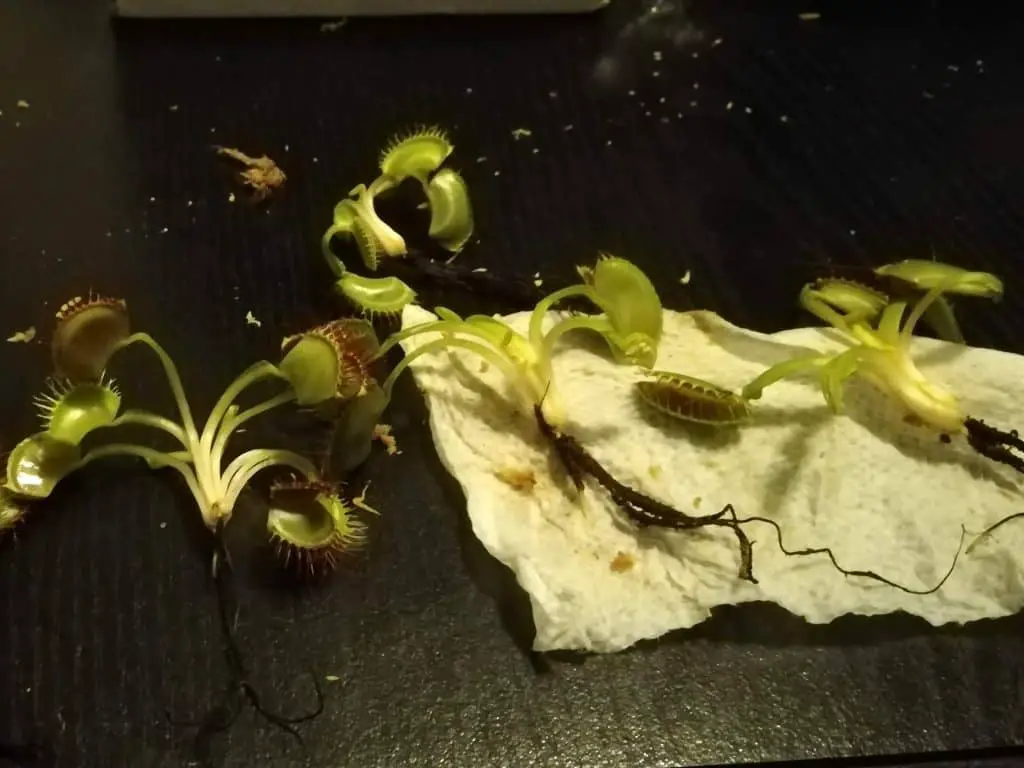
If your plant is suffering from root rot, follow these steps to save your plant:
- Remove the plant from the soil.
- Rinse the plant roots and bulb with distilled water.
- Identify the affected area within the plant’s bulb
- Use small scissors to remove the rotting part of the Venus flytrap.
- Remove any affected leaves too.
- Rinse the plant again with distilled water and verify all the unhealthy matter was removed.
- Toss the old soil.
- Rinse the pot thoroughly.
- Use new soil to fill the pot.
- Water the soil until is it moist, but not wet.
- Make a deep vertical hole in the center of the pot.
- Carefully repot the Venus flytrap.
- Wait patiently.
In new soil and without the unhealthy part of its bulb, your Venus flytrap has good chances to survive. Ignoring the root rot will definitely kill the plant.
Misting vs Watering Venus Flytraps
Misting and watering cover two different care considerations for Venus flytraps. The watering requirements for this plant are very specific. However, misting is not usually necessary.
When Venus flytraps are watered properly, the soil is humid and provides enough humidity in the environment for the plant to develop properly. However, in some extreme conditions, Venus flytraps can benefit from higher humidity indexes, and misting is beneficial.
Venus flytraps only grow in a very specific region of the United States, in the states of South Carolina and North Carolina. In their natural habitat, they are exposed to high humidity year-round, which exceeds 50%.
When living in an arid environment, like me (I live in Arizona), you should consider misting your plant manually with a spray. You do not need to do it every single day, but a sporadic misting can help our plant adequate for the environment. Also, some growers place open water containers close to their plant to increase the humidity levels in the environment.
Related Care Considerations
Carnivorous Plant Soil
The choice of soil and watering are key care considerations for Venus flytrap. Choosing the appropriate soil can help you avoid overwatering. Also, it can give your plant a better growing environment.
Venus flytraps require nutrient-free soil. Many people employ pure long-fibered sphagnum moss or peat moss as soil options. Those two are fine selections. However, adding one extra ingredient in the soil can benefit Venus flytrap. It is very useful to add perlite or sand and mix it with the selected moss. You can employ a 2:1, 4:1, 5:1 moss to perlite ratio (just to give a few examples).
The perlite or sand will serve two main functions: drainage and aeration. As draining agents they prevent the soil from holding water for long periods of time. Overall, better drainage will lower the chances of root rot.
Also, perlite and sand help keep the ground loose and uncompacted. Venus flytraps have difficulty growing and expanding their roots in firmly compacted grounds.
Growing Venus Flytraps in a Terrarium
Venus flytraps can be grown in terrariums, however, it is not always recommended. Enclosed terrariums provide a humid environment for Venus flytraps, which is a great fit. Also, fully enclosed terrariums do not require constant watering. Yet, in inclosed terrariums, Venus flytraps can not experience dormancy or catch prey.
The best terrariums for Venus fly traps are the greenhouse terrariums. In these terrariums, each plant is placed in its specific pot. In the case of Venus flytrap, the pot contains nutrient-free soil and the plant is only watered with pure water. You will still need to water your plant when placed in the terrarium as it won’t be a completely closed system.
Why Can’t Venus Flytraps Handle Minerals or Salts in the Water?
First of all, Venus flytraps require a nutrient-free environment to survive. They need a mineral-free nutrient-free soil and water. It is not only about, the water, but also about the soil.
In the wild, Venus flytraps grow in very poor soil. The soil lacks the nutrients most plants need to survive. As a result of these conditions, Venus flytraps have little to no tolerance to any type of nutrients in the ground or in the water. For that same reason, it is not recommended to fertilize these plants. Most plants thrive with fertilizer or plant food. Venus flytraps die if they are fertilized too often.
Since Venus flytraps can’t absorb nutrients from the soil, they have evolved to be successful predators. Their modified leaves are trapping mechanisms that lure and capture victims. Venus flytraps catch and consume bug to supplement their diet and obtain elements such as Nitrogen, Phosphorus, and Potassium.
The best way to boost the growth if Venus flytraps is to water appropriately, provide plenty of sunlight and feed your plant to supplement their diet.
Venus Flytrap Care Tips
- Venus flytraps require a continuously moist environment. Never let the soil of your plant dry out completely. You can employ the water tray method to keep your plant’s environment moist at all times.
- Consider misting your plant periodically if you live in an arid climate. Misting increases the humidity in the environment, which is beneficial for Venus flytrap.
- Venus flytraps do not emit any smell. If you notice an unpleasant odor coming from your plant, it is not normal. It can be a clear sign of root rot.
- Black leaves in Venus flytraps are normal. However, yellow leaves or half yellow half black leaves are a warning sign. Root rot or over-watering cause the yellowing of leaves.
- Repot your Venus flytrap every year to prevent soil compression and ensure proper drainage. Good drainage prevents waterlogged conditions.
- It is much easier to underwater Venus flytraps than to overwatering. Your plant will only suffer due to too much water if the soil has a swamp-like consistency. Otherwise, Venus flytraps can receive lots of water!
